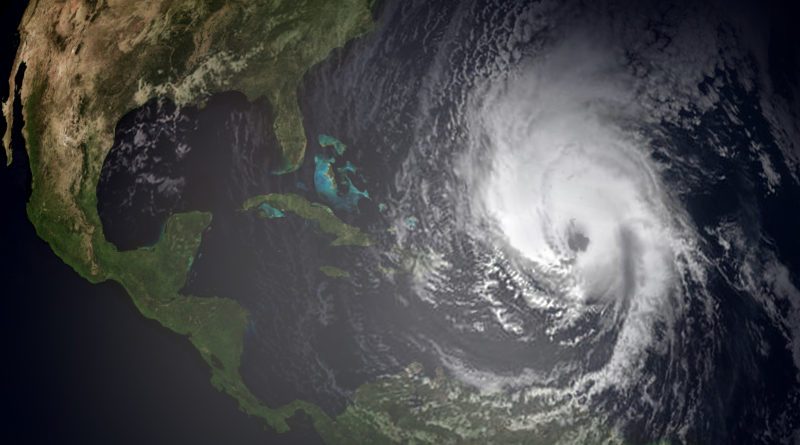Will Predictions of an “Extremely Active” Hurricane Season Come True?
5,195 total views, 1 views today
In a recent media teleconference, lead forecaster Garry Bell from the Climate Prediction Center of the National Oceanic and Atmospheric Administration (NOAA) estimated that there could be 19 to 25 named storms during the 2020 hurricane season. On August 6, Bell stated that atmospheric and oceanic conditions are primed to kickstart an “extremely active” season of storms in the Atlantic Ocean. The predicted 19 to 25 named storms could have sustained winds above 38 miles an hour. Of these storms, seven to 11 could be hurricanes with wind speeds of 74 miles or higher, with three to six potential major hurricanes of Category 3 or higher.
According to NOAA historical records, the average hurricane season produces two named storms by early August, ending with nine named storms typically developing in October. An average hurricane season produces about 12 named storms. Within a typical season, approximately six storms become hurricanes and three become major hurricanes. However, the 2020 Atlantic hurricane season, which officially began on June 1, has already broken records with nine named storms including Hurricane Hanna and Hurricane Isaias.
“What people need to realize is that we are still 23 days from the peak of hurricane season, and we are very much on a record pace,” meteorologist Chad Myers said in an interview with a major media outlet. Hurricane season usually peaks around September 10 while the Atlantic’s waters are close to their warmest. 85 percent of major hurricanes occur after August 20.
The National Hurricane Center announced on Tuesday morning that there is a 90 percent chance of a tropical depression or storm, which would take the name Laura, developing in the next five days. The source of the tropical storm is estimated to be 900 miles west-southwest of the Cabo Verde Islands.
Dr. Bell of the NOAA also said that the current evidence of climate change contributing to this hurricane season is inconclusive. Hurricane activity in the Atlantic is greatly affected by two elements of the planet’s climate system. The first element is natural variations that span decades, such as sea surface temperatures in the North Atlantic, and the second is shorter-term temperature variations in the equatorial Pacific Ocean.
With the peak of the hurricane season arising and COVID-19 rampant in many hurricane-prone areas, the United States could potentially face two overlapping crises. According to a study by scientists at Columbia University and the Union of Concerned Scientists (UCS), a large-scale hurricane evacuation would increase the spread of COVID-19 in hurricane-affected areas and other locations with relocated evacuees. The study’s findings indicated that directing evacuees to towns with low COVID-19 transmission rates would minimize the increase.
The UCS and Columbia research teams simulated a hypothetical evacuation scenario in which residents of Palm Beach, Broward, Miami-Dade, and Monroe counties evacuated due to a Category 3 hurricane. Based on previous studies of evacuation compliance and behavior, the study estimated that 2.3 million people would leave the four Florida counties. Surveys taken after Hurricane Irma were used to estimate where evacuees would go. Finally, the researchers used national county-scale model of COVID-19 transmission rates to estimate how many cases would result from hurricane evacuations and the locations they would occur.
Researchers at Columbia University and UCS concluded that in the worst-case scenario, if people repeated historic evacuation patterns, then virus transmission rates would increase by 20 percent in their destination counties. This increase would translate to roughly 61,000 additional COVID-19 cases in the origin and relocation areas.
Dr. Jeffrey Shaman, who is director of the university’s Climate and Health Program and a professor at Columbia’s Mailman School of Public Health and the Earth Institute, stated in the study that, “Directing evacuees to destinations with low virus activity and providing housing opportunities and resources that help maintain social distancing, encourage mask usage, and limiting opportunities for virus transmission will be essential.” His predictions resemble the actions taken earlier this year in Michigan after flooding there caused similar evacuations, but minimal COVID-19 spread.

